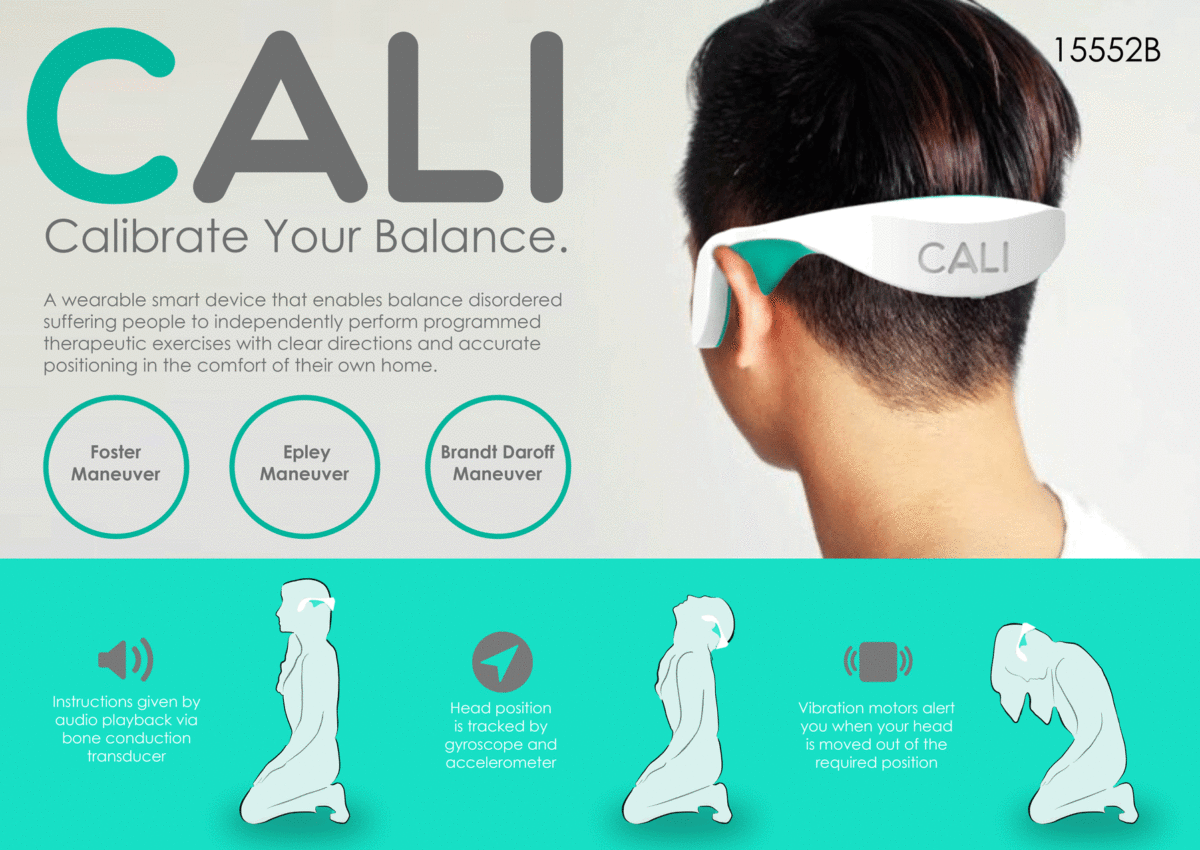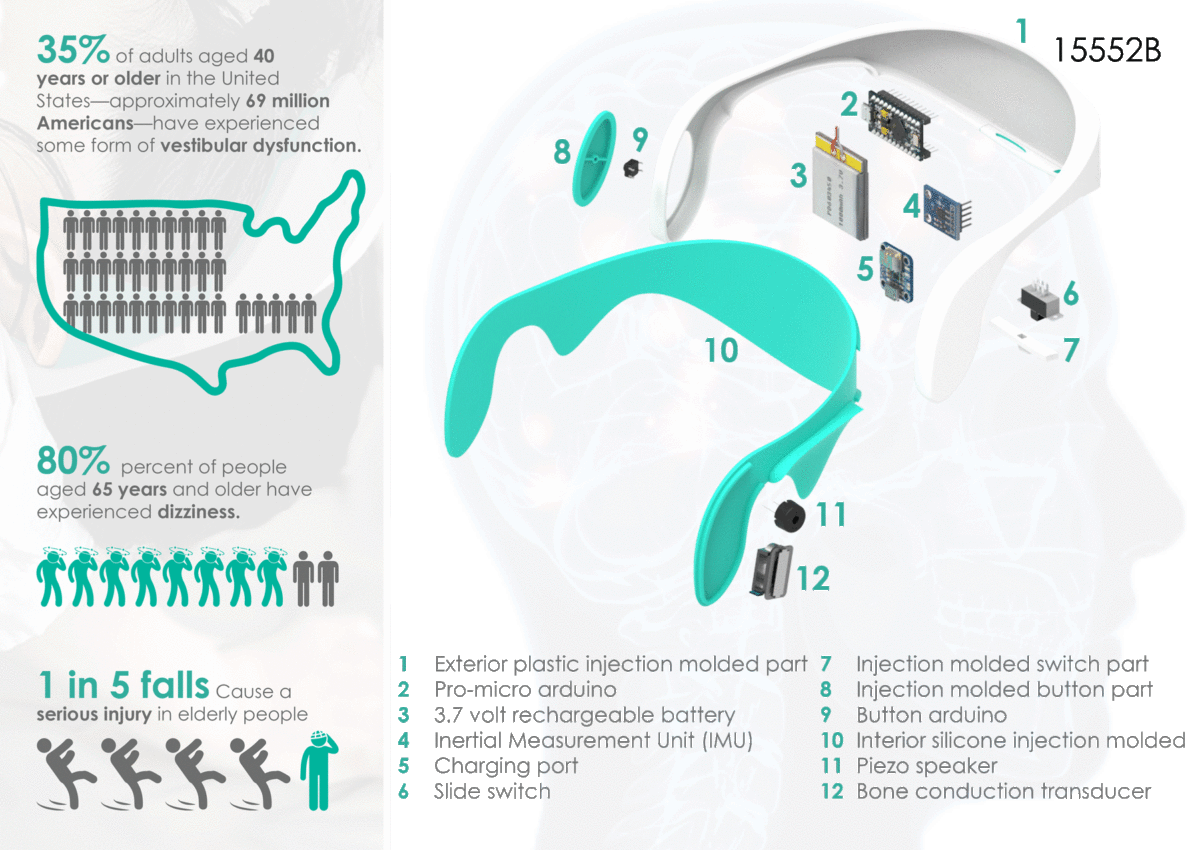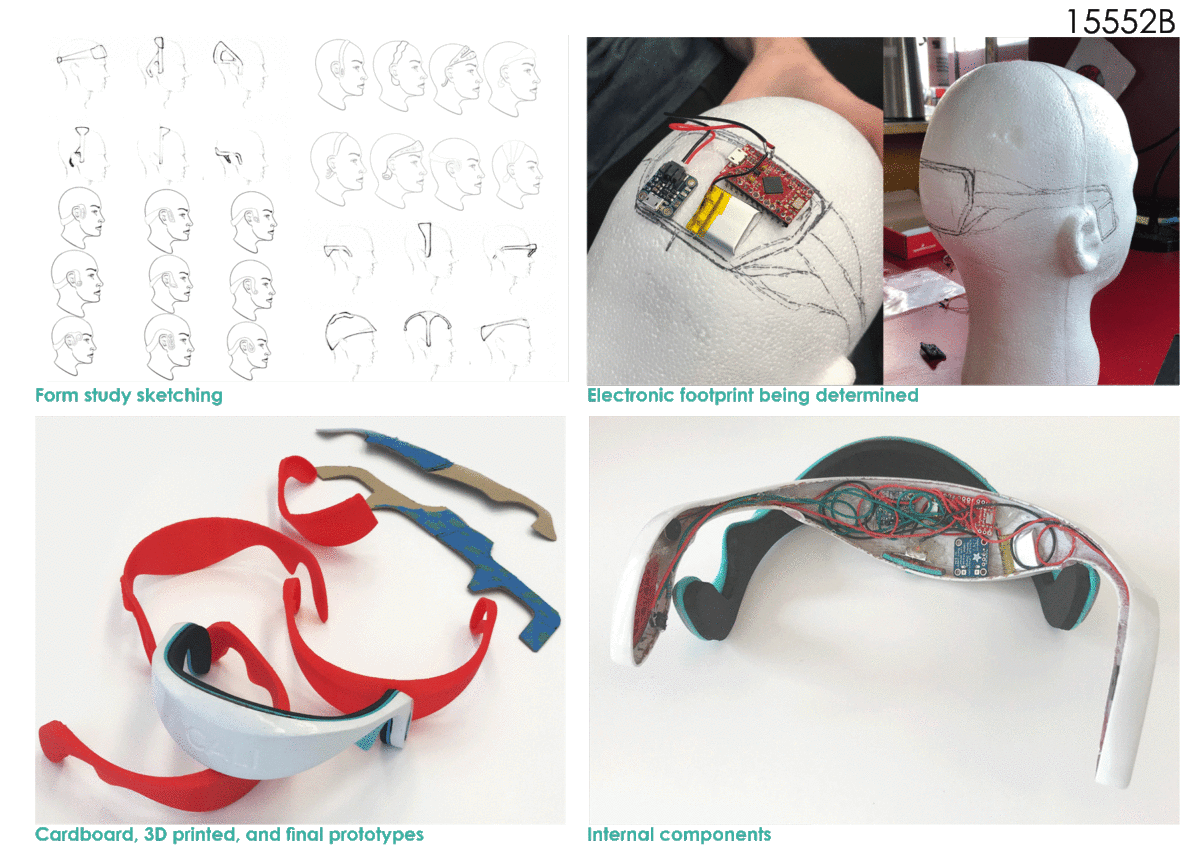RESHAPE18 | sensing materialities
Product design category
Calì
Designer: Quinn Edgecombe, Ronald Finger

Cali. Calibrate Your Balance
Cali is a wearable device that allows people who suffer from vestibular derived vertigo to independently carry out physical therapy exercises that improve their balance in the comfort of their own home.
What leads us to research vertigo, the leading cause of falling, was that one of our grandfathers had two devastating falls. 80% of people aged 65+ have experienced dizziness, and Benign Paroxysmal Positional Vertigo (BPPV), the most common vestibular disorder, is the cause of approximately 50% of dizziness in older people and 1 in every 5 falls cause a serious injury in elderly people.
Overall, vertigo from a vestibular problem accounts for 1/3rd of all dizziness and vertigo symptoms reported to health care professionals. Vertigo is a debilitating disease and cannot be accurately alleviated without the help of a physical therapist.
Cali is programmed with three different exercises: Brandt-Daroff, Epley, and Foster manoeuvre.
These exercises move the user’s head around in different positions and angles for certain amounts of time so that built up calcium carbonate crystals are moved out of the semicircular canals of the inner ear. These crystals are the cause of overwhelming dizziness.
Directions are given for the selected exercise through bone conduction transducers. Bone conduction is important because people with hearing loss can clearly hear the instructions while others around them are not disrupted. Most importantly, the angle of the user’s head is tracked by an inertial measurement unit (IMU). The user is notified by a beep when their head is in the correct position and alerted via vibration if their head is out of place. It’s operated by a single button and is USB rechargeable.

The design was driven by human factors since our product is a highly ergonomically demanding headset. We conducted validation testing and ideation exploration through physical and virtual models of heads. We adjusted our design as we discovered what the form factors of a wearable head device are. Furthermore, implementation of technology into our design also heavily influenced our product. An Arduino Pro Micro was used for the brains of the computing, as well as an inertial measurement unit (IMU), battery, charger, audio driver, and bone conduction transducer. After sketching, we developed multiple form studies using the mannequin head, mapping out the required electronic components, resulting in a shape we could base our design around. After modeling in Solidworks, we started 3D printing various concepts in order to find the most comfortable form as well as to ensure that all the components fit. In time, the optimal form was found and Cali was created.
Currently, the only solution to alleviate the distressing effects of vertigo is to perform the exercises with a physical therapist (PT) or through the help of a friend or family member. The second problem is inaccurate head placement. It’s not possible for the users to know the exact angle that their head is at during the exercises, decreasing the accuracy and the chances of displacing the crystals. The third drawback is dependence on others. Many people rely on
assistance to do these exercises, but that doesn’t mean that they will always be available to do so. For example, if a person who lives alone experiences a vertigo episode, they are unable to drive or walk to their PT’s office and they don’t have anyone else at home to help them with the exercises. Moreover, with Cali, the user can easily pick up the device and perform the exercises independently and relieve their symptoms.

Moving forward, we aim to market our product to various medical hubs based in our city of Houston. Next, we would market globally, making Cali available for vertigo suffering users all around the world. A custom circuit board for Cali would be developed so that the components have a smaller footprint and reduce the manufacturing cost. The prospective retail price would be around $60-75, a reasonable price for insurance to cover or for someone to afford. Access to Cali would be through a physical therapist or ENT as prescribed. Further development could also lead to enabling physical therapists to program Cali to a specific patient’s needs.
In conclusion, Cali’s wearable device technology has the opportunity to alleviate tens if not hundreds of thousands of people suffering from vestibular based vertigo and empower them to independently complete their exercises in the comfort of their own home.

